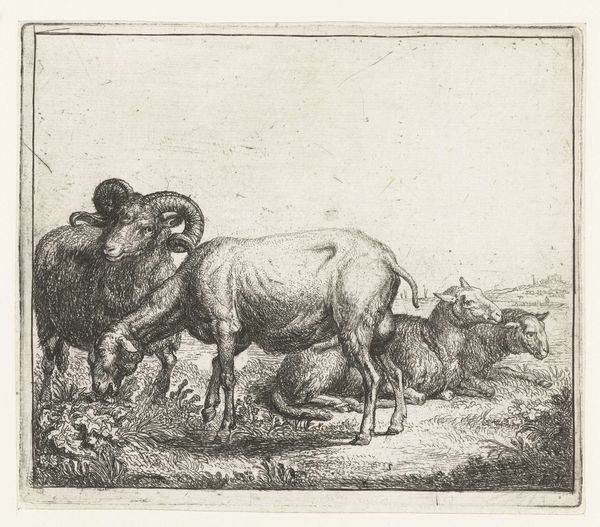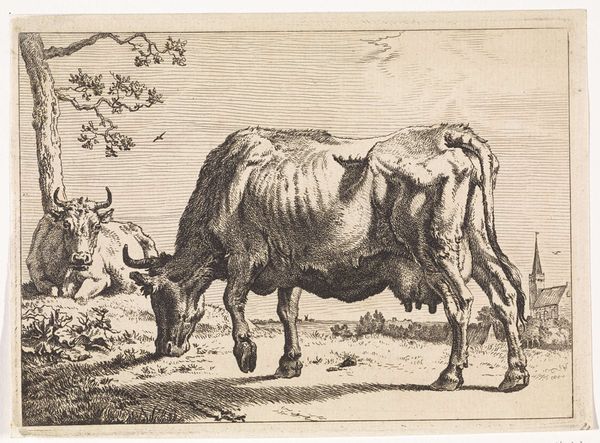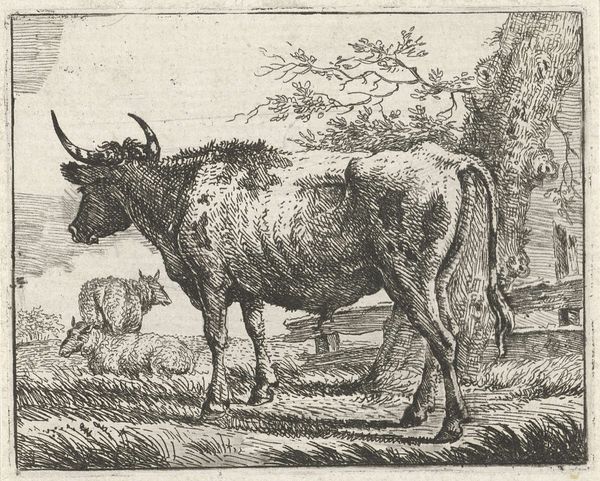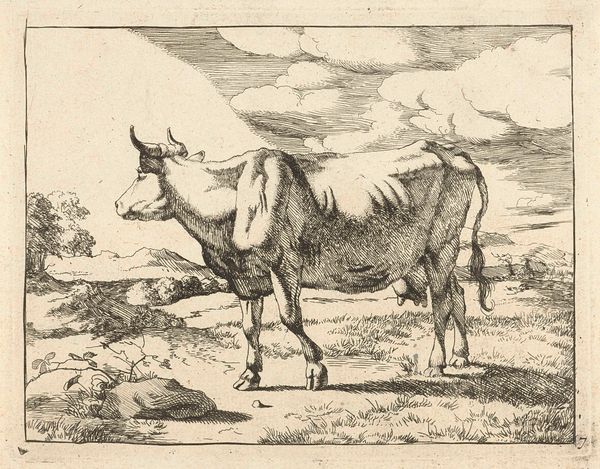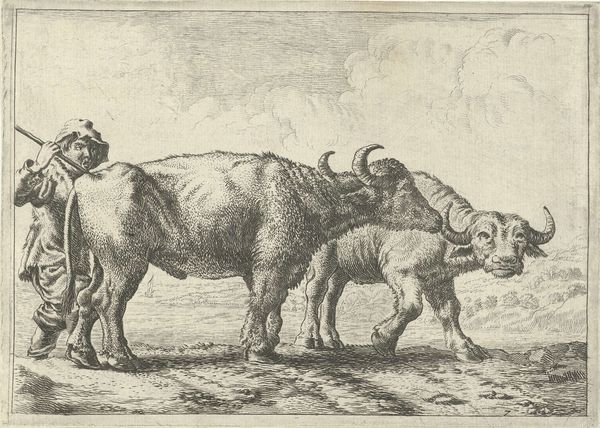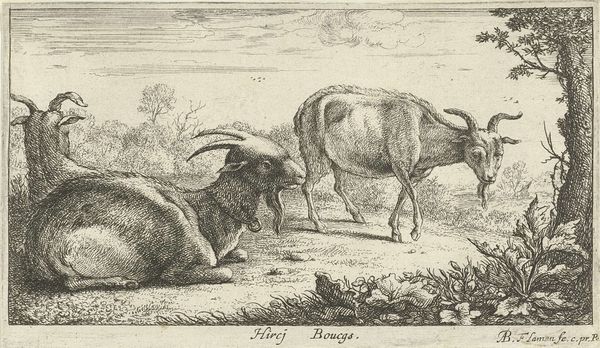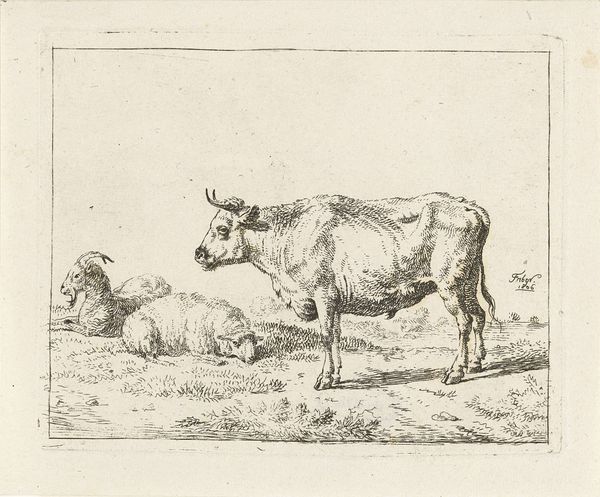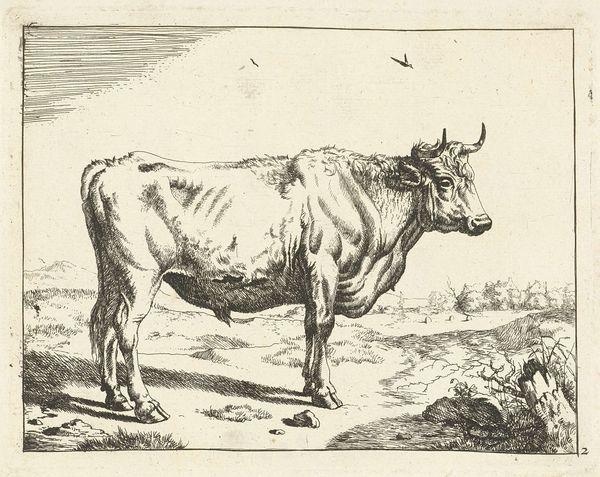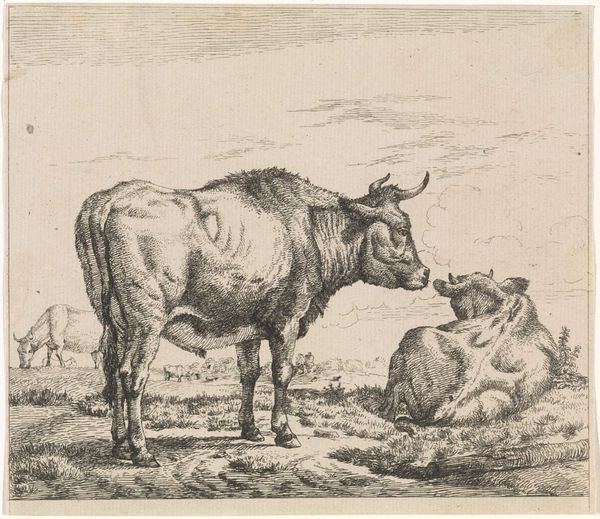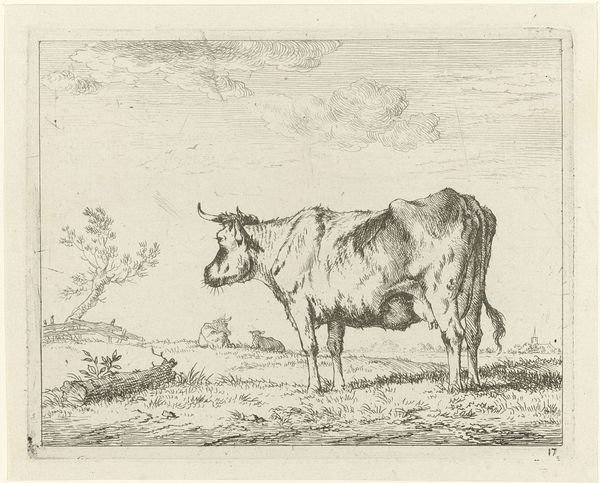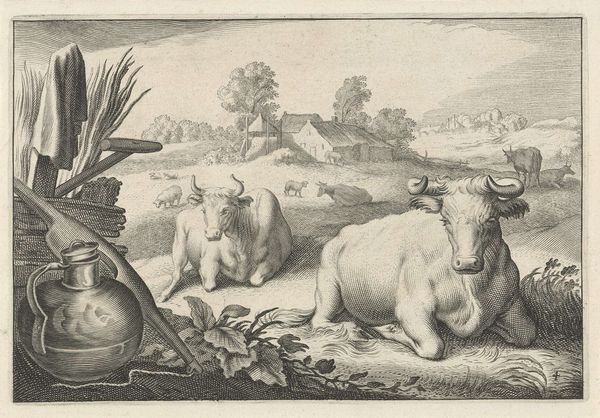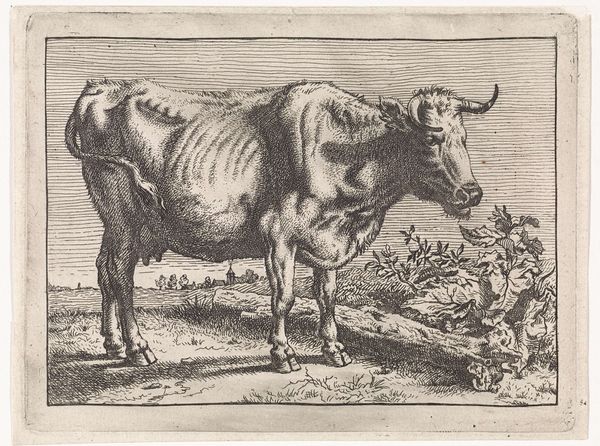
print, engraving
#
dutch-golden-age
# print
#
landscape
#
figuration
#
line
#
genre-painting
#
engraving
#
realism
Dimensions: height 131 mm, width 195 mm
Copyright: Rijks Museum: Open Domain
Editor: This engraving, “Weiland met twee stieren” by Reinier van Persijn from 1641, depicts two bulls in a field. It's striking how realistic and detailed the animals are, but I wonder about its significance. What do you see in this piece beyond the surface level? Curator: Considering the time it was made, look at how Persijn utilizes the material process of engraving to represent idealized images of agrarian prosperity, specifically through the depiction of healthy livestock. These prints were commodities themselves, circulating in a growing market for images. They were more than just representations of the countryside; they played a role in constructing and reinforcing certain social and economic values. How might the accessibility of printmaking compared to painting influence its social impact? Editor: So, it's not just about showing bulls, but about how the image itself participates in the economy and ideals of the time? That makes me think about who could afford these prints and what that says about the intended audience. Were these like… early advertisements for Dutch agriculture? Curator: Partly. They served as status symbols but also circulated knowledge and encouraged investment in certain agricultural practices. The printmaking process – the labour, the materials, the distribution – it’s all tied to the economic and social context of the Dutch Golden Age. Even the style is significant – its realism suggesting truthful documentation of an ideal. Editor: That’s fascinating. I hadn’t thought about the process of creating the print as being so integral to its meaning. I'm so used to seeing art through the lens of the artist’s intentions, it's easy to forget about all the other contributing factors. Curator: Exactly! And it allows us to appreciate the print as a historical object and a participant in a much broader material culture. Considering the process behind this changes how we perceive value in art. Editor: I definitely see this piece with a new appreciation now. It's not just a pastoral scene but a reflection of a whole economic and social system embedded in the materials and methods of its creation.
Comments
No comments
Be the first to comment and join the conversation on the ultimate creative platform.
